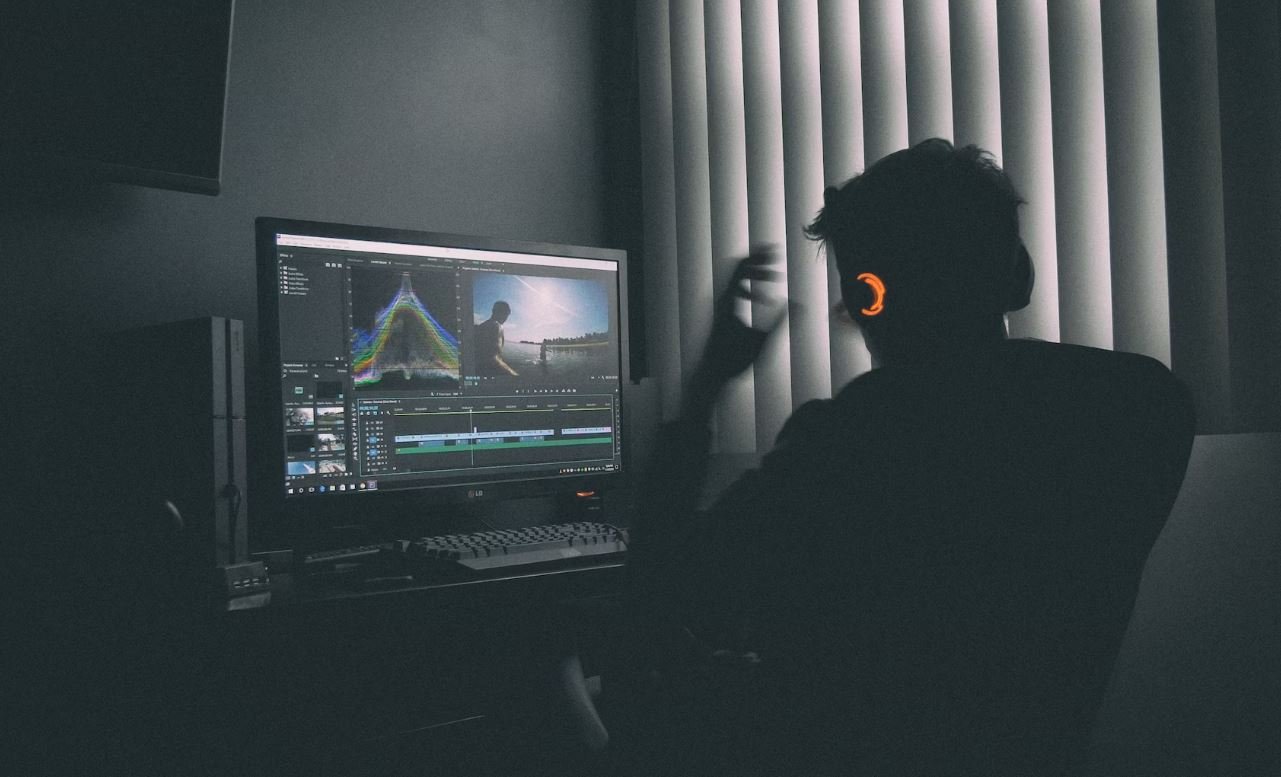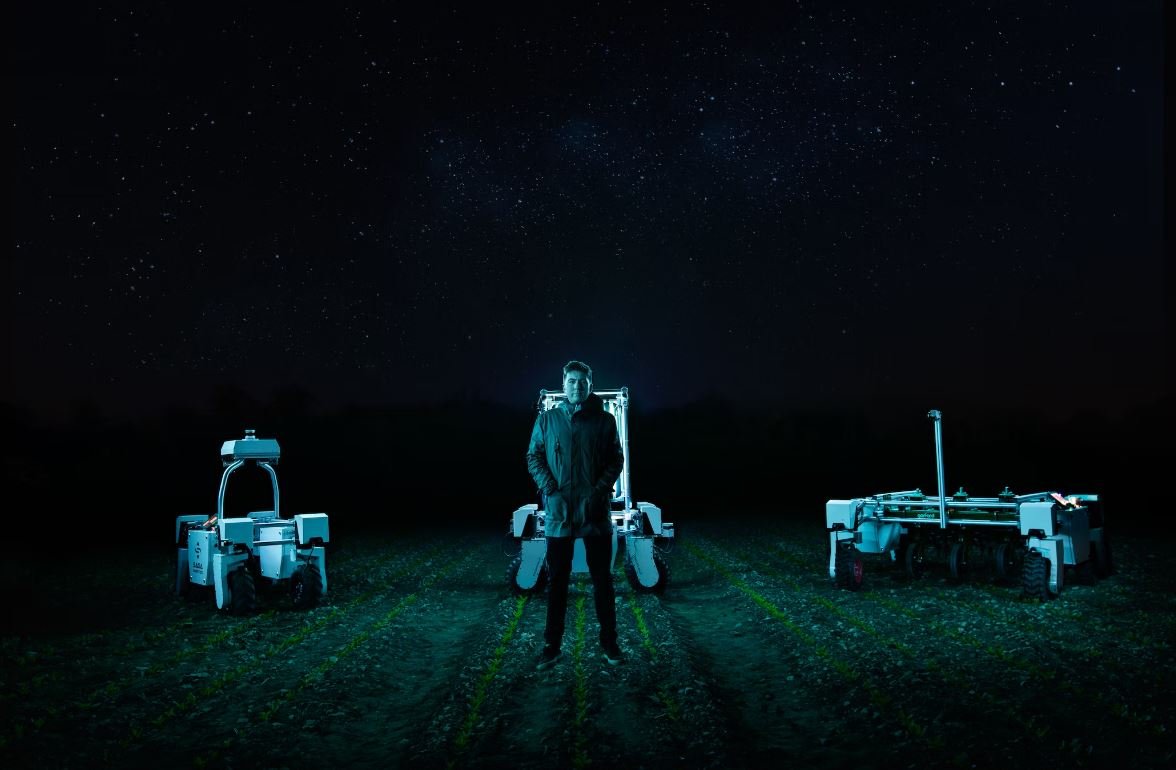How to Start an Audio Podcast
If you have a passion for a certain topic and want to share it with the world, starting an audio podcast can be a great way to connect with an audience. Podcasting allows you to create and distribute your own audio content and engage with people who have similar interests. In this article, we will guide you through the steps of starting an audio podcast successfully.
Key Takeaways:
- Starting an audio podcast can help you share your passion with a wider audience.
- Podcasting allows you to create and distribute your own audio content.
- Engaging with your audience is crucial for building a loyal listenership.
- Having the right equipment and software is essential for recording and editing your podcast.
1. Define Your Podcast Concept
Before you start recording, it’s important to have a clear understanding of what your podcast will be about. Choose a topic that you are knowledgeable and passionate about, and think about how it will resonate with your target audience. *Remember, a unique and compelling concept will attract more listeners.*
Some questions to ask yourself when defining your podcast concept:
- What niche or specific topic will your podcast focus on?
- What problem or need will your podcast address?
- What format will your podcast have? (interviews, storytelling, solo discussions, etc.)
2. Plan Your Episodes and Episodes Structure
Once you have defined your podcast concept, it’s time to plan your episodes and their structure. Decide on the length of each episode and how frequently you will release new episodes. *Creating an editorial calendar will help you stay organized and consistently deliver valuable content.*
Consider the following when planning your episodes:
- Outline the main topics or themes you want to cover in each episode.
- Prepare questions or talking points if you will have guests on your show.
- Think about the overall flow and pacing of your episodes.
3. Get the Right Recording and Editing Equipment
To create a high-quality podcast, you’ll need the right recording and editing equipment. Invest in a good microphone, headphones, and a reliable computer. *Remember, clear audio is crucial for retaining your listeners.*
Here are some essential podcasting equipment you will need:
| Equipment | Recommendation |
|---|---|
| Microphone | Blue Yeti |
| Headphones | Sennheiser HD 280 Pro |
| Audio Editing Software | Adobe Audition |
4. Record and Edit Your Podcast
Once you have your equipment set up, it’s time to start recording and editing your podcast. Find a quiet space where you won’t be interrupted and ensure you have good acoustics. *Remember, practicing and experimenting with your recording techniques can help improve the overall quality of your podcast.*
Follow these steps when recording and editing your podcast:
- Set up your equipment and adjust levels to get a good sound.
- Start recording and speak clearly into the microphone.
- Edit out any mistakes, gaps, or background noise using your audio editing software.
- Add any desired music, sound effects, or transitions to enhance your podcast.
5. Choose a Podcast Hosting Platform
After you have recorded and edited your episodes, you’ll need a podcast hosting platform to store and distribute your content. A podcast hosting platform generates an RSS feed, which is required by podcast directories to list your show. *Remember, choosing a reliable hosting platform ensures that your podcast is accessible to a wide audience.*
Consider the following when choosing a podcast hosting platform:
- Storage limits and pricing.
- Podcast analytics and statistics.
- Integration with podcast directories such as Apple Podcasts and Spotify.
6. Promote Your Podcast
Once your podcast is ready, it’s time to promote it and attract an audience. Utilize social media platforms, create engaging cover art, and leverage your existing network to get the word out about your podcast. *Remember, consistent promotion is key to growing your listener base.*
Here are some effective promotion strategies:
- Share snippets or teasers of your episodes on social media.
- Create eye-catching cover art that reflects your podcast’s branding.
- Ask your friends, family, and colleagues to share your podcast with their networks.
| Podcast Statistics | Data |
|---|---|
| Total Number of Podcasts (2021) | 2,000,000+ |
| Number of Podcast Listeners (2021) | 155 million+ |
| Percentage of Americans Who Have Listened to a Podcast | 44% |
Start Sharing Your Passion through Podcasting
Starting an audio podcast allows you to connect with like-minded individuals, share your knowledge, and build a loyal listenership. By following the steps outlined in this article, you are on your way to successfully launching your own podcast. So go ahead, start recording, and let your voice be heard!

Common Misconceptions
Misconception 1: Starting an audio podcast requires expensive equipment
One common misconception people have about starting an audio podcast is that it requires expensive equipment. In reality, you don’t need to invest in high-end microphones or recording studios to produce a successful podcast. Many podcasts are recorded using affordable USB microphones and simple recording software.
- USB microphones can deliver good audio quality without breaking the bank.
- You can use free or inexpensive recording software like Audacity or GarageBand.
- With proper editing and post-production techniques, you can improve the overall sound quality of your podcast.
Misconception 2: You need to be an expert in audio editing
Another misconception is that you need to be an expert in audio editing to start an audio podcast. While having some knowledge of editing techniques can be helpful, it is not a requirement. There are user-friendly editing tools available that make the process simpler for beginners.
- Software like Audacity or Adobe Audition has a user-friendly interface and provides basic editing features.
- Basic editing tasks such as trimming, cutting, and adding background music can be easily learned with online tutorials.
- You can always outsource the editing process to professionals if you feel overwhelmed or want to focus on other aspects of podcasting.
Misconception 3: Gathering a large audience happens overnight
Many people believe that they will gather a large audience for their podcast overnight. However, building a loyal and engaged audience takes time and consistent effort. It is important to set realistic expectations and understand that podcast growth is a gradual process.
- Consistently releasing high-quality content and promoting it through various channels can help attract a larger audience over time.
- Building a strong social media presence and engaging with your listeners can also help increase your podcast’s visibility.
- Guest appearances on other podcasts or cross-promotion with other podcasters can expose your show to a wider audience.
Misconception 4: Podcasting is only for experts or celebrities
Some people believe that podcasting is a platform reserved for experts or celebrities, and that they do not have the necessary credentials or experience to start their own podcast. However, podcasting is an accessible medium for anyone with a passion or knowledge to share.
- Podcasts provide a platform for individuals from diverse backgrounds to share their unique perspectives and expertise.
- Listeners are often drawn to authentic voices and personal stories, making niche podcasts with passionate hosts highly appealing.
- Podcasting allows you to connect with like-minded individuals and build a community around a shared interest or topic.
Misconception 5: Podcasting requires a large time commitment
Lastly, there is a common misconception that podcasting requires a significant time commitment. While producing a podcast does require some time and effort, it can be manageable if you plan and organize your workflow effectively.
- Create a podcast schedule and set aside dedicated time for recording, editing, and promoting episodes.
- Batch recording several episodes in one sitting can help save time in the long run.
- Automating certain tasks, such as publishing episodes and social media promotions, can streamline the process and reduce overall time investment.

Step-by-Step Guide to Starting an Audio Podcast
Starting an audio podcast can be an exciting venture, but it requires careful planning and knowledge of the necessary steps. In this article, we will outline the key elements of launching a successful podcast and provide valuable insights based on real data and information. Read on to discover various aspects you need to consider as you embark on your podcasting journey.
Choosing a Podcast Theme
Before diving into podcast production, it’s crucial to select a theme that aligns with your interests and target audience. Here are some popular podcast themes:
| Theme | Percentage of Top Podcasts |
| ——————– | ————————– |
| True Crime | 22% |
| Education | 18% |
| News and Politics | 15% |
| Health and Wellness | 12% |
| Comedy | 10% |
| Business | 8% |
| Technology | 7% |
| Personal Development | 5% |
| History | 3% |
| Other | 5% |
As shown in the table above, true crime podcasts are the most prevalent among top shows, followed by education and news-related podcasts.
Podcast Episode Durations
Deciding on your average episode duration is an essential aspect of podcast planning. Understanding common episode lengths can help you determine what works best for your content. Here are the average durations of podcast episodes:
| Duration | Percentage of Podcasts |
| ———- | ———————- |
| 30-40 min | 30% |
| 20-30 min | 25% |
| 40-50 min | 20% |
| 50-60 min | 15% |
| < 20 min | 5% |
| > 60 min | 5% |
This data emphasizes the prevalence of episodes between 30 and 40 minutes in length, demonstrating that concise yet informative content is highly valued by podcast listeners.
Popular Podcast Formats
Choosing the right format for your podcast is crucial for engaging your audience and delivering your message effectively. Here are some popular podcast formats:
| Format | Description |
| ——————- | ———————————————————————————– |
| Interview | Guests share their expertise and engage in conversations on various topics. |
| Solo | One host shares insights, knowledge, or personal stories. |
| Co-hosted | Two or more hosts bring different perspectives to the discussion in a conversational style. |
| Panel | Multiple hosts and guests engage in lively discussions on specific subjects. |
| Documentary/Narrative | Storytelling format with a scripted and produced approach. |
By analyzing this data, it becomes evident that interview-style podcasts are prevalent, closely followed by solo hosts and co-hosted shows.
Recording Equipment
Investing in the right recording equipment ensures high-quality audio for your podcast. Here are the most commonly used recording devices:
| Equipment | Percentage of Podcasters |
| —————– | ———————– |
| USB Microphone | 45% |
| XLR Microphone | 35% |
| Portable Recorder | 13% |
| Smartphone | 7% |
Based on data analysis, USB microphones are the preferred choice among podcasters due to their convenience and affordability.
Podcast Editing Software
Editing is an essential part of podcast production. Here are some commonly used editing software options:
| Software | Percentage of Podcasters |
| ————- | ———————– |
| Audacity | 50% |
| Adobe Audition| 30% |
| GarageBand | 12% |
| Logic Pro X | 5% |
| Hindenburg | 3% |
Audacity emerges as the most popular choice for editing podcasts, with a majority of podcasters utilizing its versatile features.
Publishing Platforms
After creating and editing your podcast, you need a reliable platform to share your content with the world. Here are some commonly used podcast publishing platforms:
| Platform | Percentage of Podcasters |
| ——— | ———————– |
| Apple Podcasts | 65% |
| Spotify | 55% |
| Google Podcasts | 40% |
| YouTube | 35% |
| SoundCloud| 20% |
| Stitcher | 18% |
Data shows that Apple Podcasts is the most popular platform among podcasters, closely followed by Spotify and Google Podcasts.
Milestone Episode Count
Reaching important episode milestones can provide a sense of achievement and inspire podcasters to continue creating content. Here are some significant milestones and their respective episode counts:
| Milestone | Episode Count |
| ———— | ————- |
| 10th Episode | 46% |
| 25th Episode | 25% |
| 50th Episode | 15% |
| 100th Episode| 10% |
| Other | 4% |
Approximately 46% of podcasters celebrate their 10th episode as a significant milestone along their podcasting journey.
Promotion Channels
Effectively promoting your podcast ensures its visibility and growth. Here are some popular promotion channels:
| Channel | Percentage of Podcasters |
| —————— | ———————– |
| Social Media | 75% |
| Podcast Directories| 55% |
| Cross-Promotion | 40% |
| Email Marketing | 25% |
| Influencer Marketing | 20% |
Social media platforms prove to be the most utilized channels for podcast promotion, with podcast directories and cross-promotion also playing important roles in reaching wider audiences.
Podcast Monetization Methods
Monetizing your podcast allows you to turn your passion into a sustainable income stream. Here are some effective monetization methods:
| Method | Percentage of Podcasters |
| —————- | ———————– |
| Sponsorships | 60% |
| Listener Donations | 40% |
| Paid Subscriptions | 35% |
| Merchandise Sales | 30% |
| Crowdfunding | 20% |
Sponsorships emerge as the most common monetization method for podcasts, followed by listener donations and paid subscriptions.
Starting an audio podcast can be a challenging endeavor, but armed with the right knowledge and insights, it becomes more manageable. From selecting an engaging theme to effectively promoting and monetizing your show, the journey requires dedication and creativity. By following these steps and leveraging the information presented, you can kickstart your podcasting journey and connect with audiences worldwide.
Frequently Asked Questions
How to Start an Audio Podcast


Leave a Reply